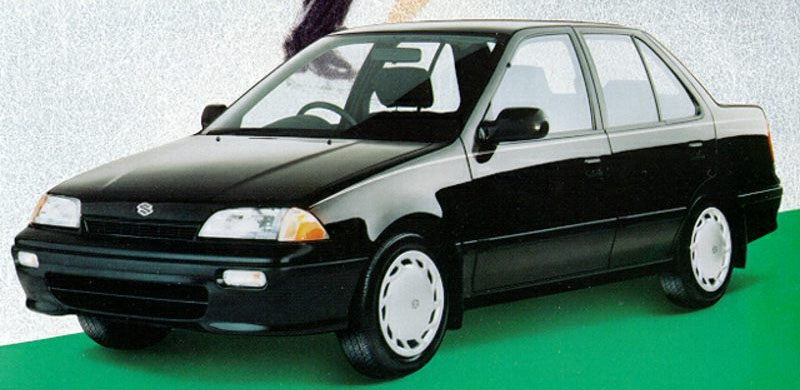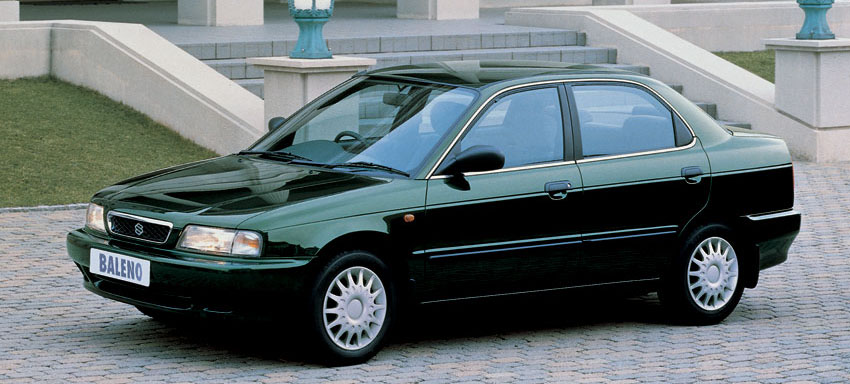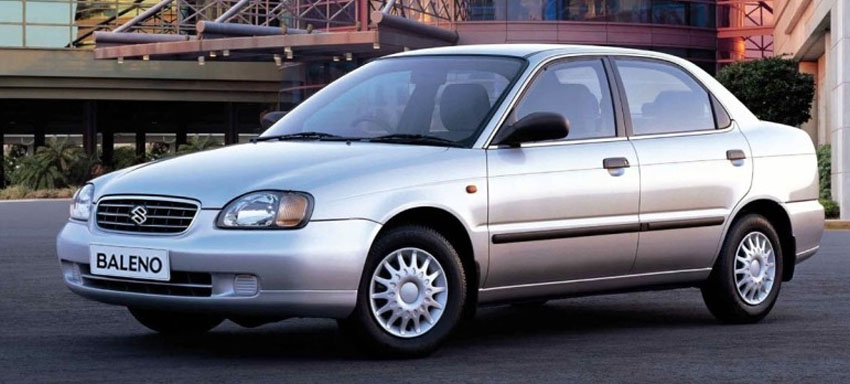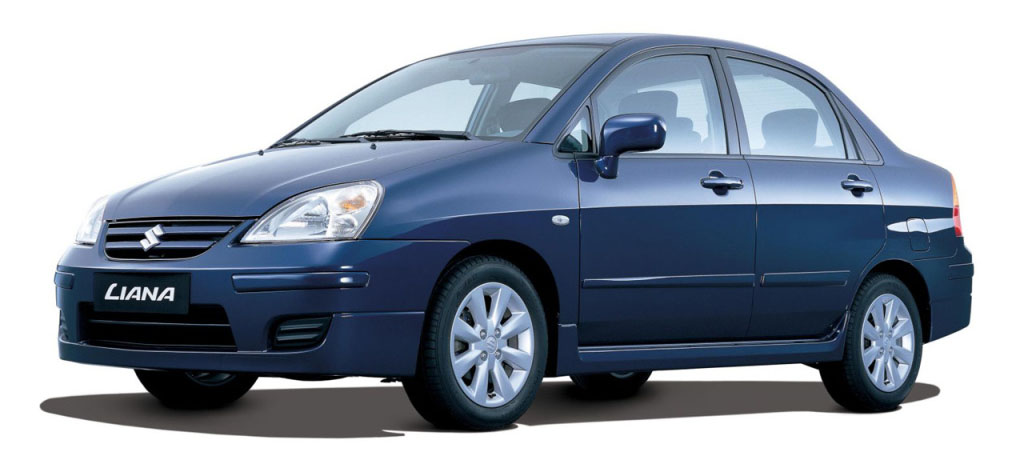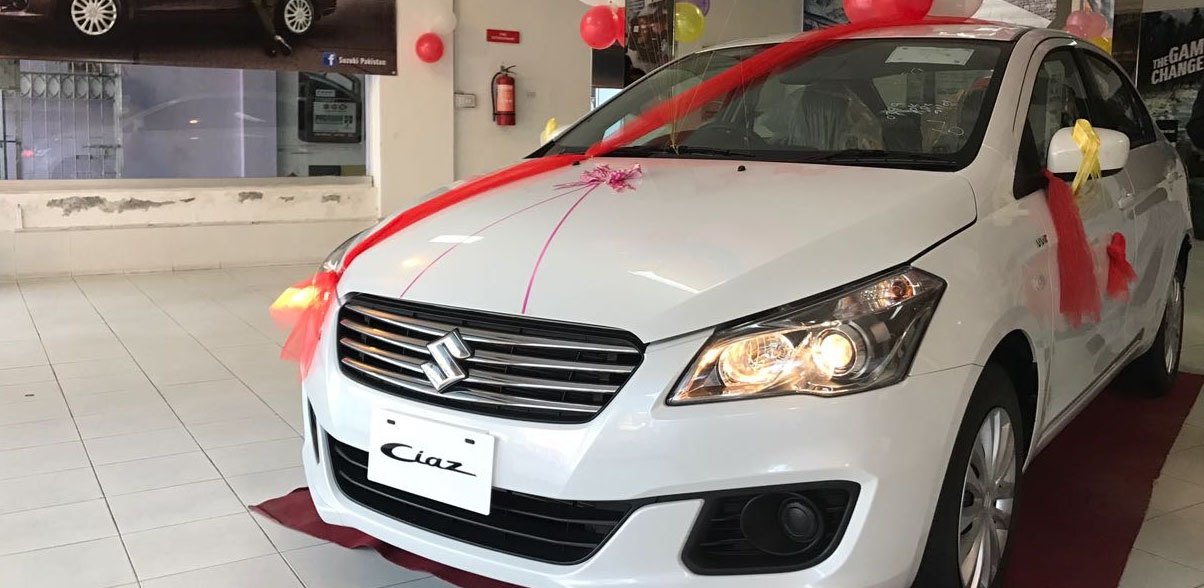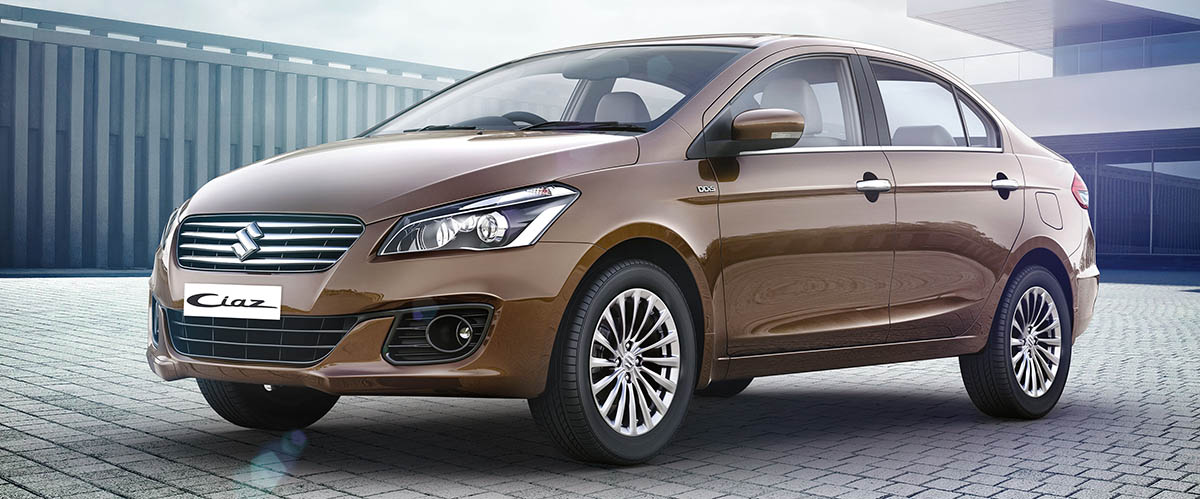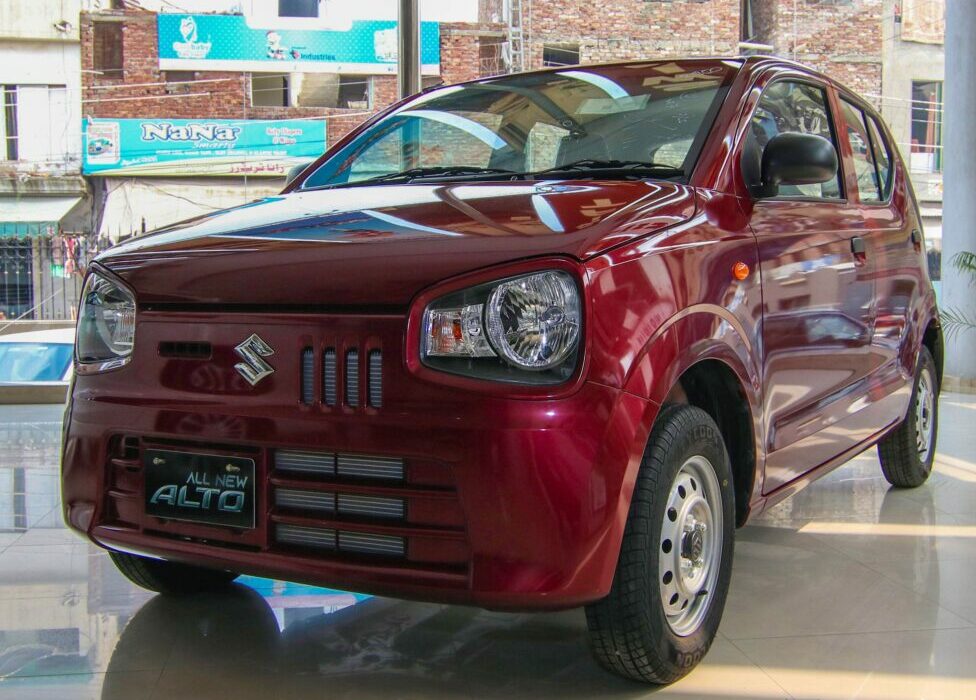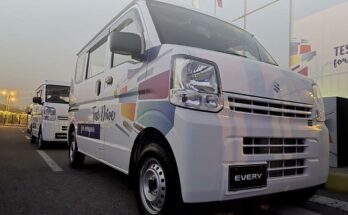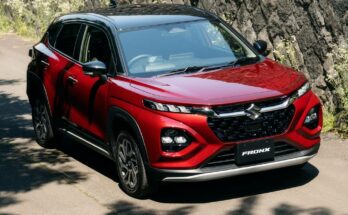Suzuki has been popular in our market mainly because of the affordable low priced cars & cheaper maintenance. Ever since they stepped in our market, the ‘Suzuki badged’ vehicles were apple-of-eye for most automobile buyers of our country with a limited budget.
Suzuki enjoyed handsome sales due to good reputation, low maintenance cost and most importantly ‘zero competition’, since imports were halted in favor of local production already.
Suzuki entirely dominated the small cars as well as small trucks & vans market, however they offered various sedans in different times but were unable to see the same success which was seen with their small hatchbacks.
Suzuki Margalla
The first locally assembled sedan by Pak Suzuki was the 1300cc Margalla which even today is known as the most successful Suzuki sedan ever to appear in our market. It was the only entry level sedan of its time and had no competition in its class whatsoever.
Margalla was loved for its decent looks, reliability, practicality, easy maintenance, inexpensive repairs and off course resale. Though on the downside the car had miserable paint quality, there were no metallic colors to opt, dashboard and interior quality was questionable while even in the 90s the car came without matching bumpers, wrap-around headlamps and automatic transmission. However a power-packed version called as the Margalla GLX was launched in 1995.
The Competition Arrived..
Up until 1997 Margalla had soaring sales figure of more than 6,000 units a year which was quite impressive for its time however sales started to suffer when in January 1997, true competition arrived in the entry level sedan market in the form of Honda City SX8.
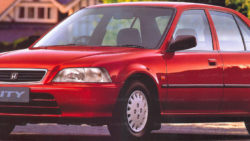 It was the first time ever when a Suzuki product was pitted against a competitor. The City was a class apart and literally outshined Margalla in every possible department. The City SX8 offered a modern yet sophisticated design, unmatched & smooth drive, exceptional built quality, powerful and soundless engine, excellent pick & acceleration, superior a/c, generous room and comfortable seating positions, fully power packed, responsive power steering, effortless gear change, class leading luggage volume, you name it.
It was the first time ever when a Suzuki product was pitted against a competitor. The City was a class apart and literally outshined Margalla in every possible department. The City SX8 offered a modern yet sophisticated design, unmatched & smooth drive, exceptional built quality, powerful and soundless engine, excellent pick & acceleration, superior a/c, generous room and comfortable seating positions, fully power packed, responsive power steering, effortless gear change, class leading luggage volume, you name it.
Since the City SX8 was largely based on the 4th generation EF Civic, most spare parts were already available in the market. People are generally reluctant to go for a new car but the City even being new and expensive than the Margalla (but cheaper than the base Corolla XE) won the hearts of people and became an instant hit right from the first month of its launch.
Related: Honda City SX8- The Game Changer
The sales of Margalla were affected so badly that the Suzuki sedan which sold at 6000 units a year managed to sell just around 3000 units a year after the introduction of Honda City SX8 in 1997. Though Suzuki tried to compete with the Honda rival with an updated dashboard and minor cosmetic changes dubbed as the Margalla Plus, but all in vain. Eventually in 1998 the Margalla sedan was replaced with the Suzuki Baleno.
Suzuki Baleno
Suzuki Baleno, the successor to Margalla sedan, remained the most technically advanced vehicle of our market throughout its 8 year production period. It was the first local Suzuki to be offered in metallic colors & matching bumpers, it was the first 1300cc car of our market to offer an ‘Electronic Fuel Injection’ system (EFI). For a limited period it was also available with a 1.6 liter engine in the Gti trims. It was the first Suzuki to carry a true facelift in 2002. It was also the first 1300cc vehicle to come equipped with an engine immobilizer in the facelift models.
Compared to Margalla which was the best example of simplest engineering, the Baleno was a pack of tech gadgetry, which was something new even for the men at Suzuki 3S. Early Baleno’s encountered some suspension issues which were recalled by Pak Suzuki and that remains one of the earliest & probably among the very few vehicle recalls of our market.
Related: The Legendary 5th Generation Corolla E80
Although Baleno was available in an exciting range of colors (more than 12), more versions compared to Honda City SX8 and cheaper price tag, it was still unable to create problems for the Honda rival.
Not only this, the Baleno was unable to reach even close to the per-year sales figures of its predecessor, the Margalla. The highest sales for the Baleno (pre-facelift) were recorded in year 1999-2000 when 2,883 units were sold. This figure is even less than the affected sales of Suzuki Margalla in 1997 & 1998, which were 3,174 and 3,074 respectively, remember Margalla enjoyed 6,000+ units a year before the competition arrived.
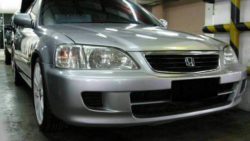 Baleno’s sales again took a dip and were literally cut into half when in year 2000, Honda launched the City SX8 facelift. This was regarded as the most celebrated facelifts to be launched in our market, as a result sales of Suzuki Baleno were reduced to just 1,484 units in 2000-01 and 1,188 in 2001-02.
Baleno’s sales again took a dip and were literally cut into half when in year 2000, Honda launched the City SX8 facelift. This was regarded as the most celebrated facelifts to be launched in our market, as a result sales of Suzuki Baleno were reduced to just 1,484 units in 2000-01 and 1,188 in 2001-02.
Related: 7th Generation Corolla E100- The Most Popular Corolla in Pakistan
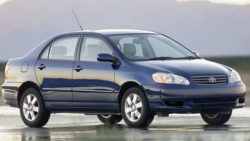 Pak Suzuki introduced the Baleno facelift in 2002 but unfortunately for them, the timing of the launch was entirely incorrect. It was the time when the 9th generation E120 Corolla was launched in Pakistan after a stretchy nine-year period of the 7th gen Corolla. The E120 was a head-turner and a jaw-dropper when it arrived and everyone was mesmerized with an all new Corolla, while the Baleno facelift launch went literally unnoticed.
Pak Suzuki introduced the Baleno facelift in 2002 but unfortunately for them, the timing of the launch was entirely incorrect. It was the time when the 9th generation E120 Corolla was launched in Pakistan after a stretchy nine-year period of the 7th gen Corolla. The E120 was a head-turner and a jaw-dropper when it arrived and everyone was mesmerized with an all new Corolla, while the Baleno facelift launch went literally unnoticed.
The Baleno facelift was the first 1.3 liter locally assembled sedan to offer an engine immobilizer, and the facelift did improve the dying sales of the Baleno as it managed to sell 2,588 units in 2002-03 which was twice as much compared to the pre-facelift Baleno, however the arch-rival Honda City SX8 facelift sold 3,749 units in the same period. But as said earlier, Suzuki’s main problem has always been ‘competition’. While low budget Suzuki cars kept on selling in good numbers due to lack of competition in the segments, Baleno, just like its predecessor Margalla had a hard time keeping up with time.
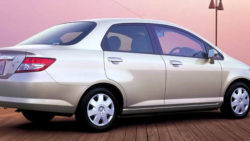 In 2003, just a year after the Baleno facelift was launched, the arch-rival Honda City had replaced the old SX8 with the GD City (IDSI). Baleno despite well equipped looked outdated with a low flat hood & typical 90s styling. Although Baleno’s individual sales improved with 4,062 units in 2003-04, the Honda City IDSI sold 7,271 units in the same year thus badly squeezing Suzuki’s market share in the sedan segment.
In 2003, just a year after the Baleno facelift was launched, the arch-rival Honda City had replaced the old SX8 with the GD City (IDSI). Baleno despite well equipped looked outdated with a low flat hood & typical 90s styling. Although Baleno’s individual sales improved with 4,062 units in 2003-04, the Honda City IDSI sold 7,271 units in the same year thus badly squeezing Suzuki’s market share in the sedan segment.
In 2005 eventually its production came to an end since the 1300cc Corolla Xli & City IDSI took away the major market share from Baleno.
Liana- Life In A New Age
In 2005 Suzuki introduced the Liana sedan which was a replacement for the ageing Baleno. Local production of Liana started in 2006 as initially the sedan was being imported. Liana sedan did well in its initial years of production however the sales kept on a decline in following years up to a time when hardly a dozen units were being sold in an entire month. Towards the end of its production Liana sold at an average of just 160 units a year, compared to Baleno, the average sales of which were around 4,000 units a year.
Liana is a car that hold a very negative impression among people, there are a few things attributed to its failure. First it was a Suzuki, the spares of which were as expensive as Honda. A lot of people expect Suzukis to be easy on pocket since they used to be this way since the 1970s. Suzuki still heavily relies on producing obsolete cars such as Mehran, Bolan & Ravi the maintenance of which is next to nothing. Even discontinued models like Cultus (old), Khyber, Alto & Margalla were very easy to maintain & spares were dirt cheap. This however wasn’t the case with the Liana. Next issue was the way the car looked; people never really envied the design. Despite the tall height of the car, the low front bumpers used to get brushed on speed breakers & bumps ever so often.
Related: Fourth Generation Suzuki Swift Launched- Pakistan Still Gets the Second Generation
It came with a factory fitted highly advanced Sequential Ignition System CNG kit (SIS) which even the dealerships had a hard time to understand & fix. Mechanics had a tough time due to its engine architecture. For example, as mentioned by a pro:
“Even thermostat cannot be changed without taking out the intake manifold. Taking the timing cover off means taking off, power steering pump, main pulley, AC compressor and one foundation. After that there are around 20 bolts to work with. If head gets de-shaped there is not much room for facing as the timing cover is single piece and is a tight fit. Nightmare for any mechanic as even a gasket change required engine to be taken out and if you try to do it without taking it out, it’s a 5 hour job to dismantle only. Also heating problem is common because of a stuck thermostat in closed position.”
By 2014 the production of Liana came to an end with some astonishing sales figures for a Suzuki-badged car in Pakistan. Liana in its last 8 years of production sold 6,127 units (averaging just 765 units a year) while it sold 6,067 units in 2006-07 alone.
Suzuki Kizashi
Related: Pak Suzuki and the Unfortunate Kizashi
Almost 2 years after it was globally discontinued, Pak Suzuki launched the unfortunate mid-sized Kizashi sedan in Pakistani market. The car was launched in February 2015 with a price tag of PKR 5.0 million. Available with a 2.4-liter four-cylinder petrol engine paired to a 6-speed manual transmission or a CVT unit. The car was silently discontinued in just a year with absolutely zero sales.
Suzuki Ciaz
Suzuki made a comeback in the sedan segment with the launch of 1.4 liter Ciaz sedan. Ciaz which is a very popular sedan for Suzuki in key markets across the globe, has been badly stripped exclusively for the Pakistani market. Even the Ciaz in Sri Lanka, Bangladesh and Jamaica etc is better equipped than the one offered by Pak Suzuki.
The Pak Suzuki Ciaz which is being imported from Thailand as CBU (Completely Built Unit) misses out more than a dozen features which are found in markets even smaller than ours. Already priced higher, Pak Suzuki pushed the prices of Ciaz beyond the level of insanity just a month after its launch. Currently the Pak Suzuki Ciaz is priced at PKR 18.59 lac for the manual and PKR 19.99 lac for the automatic version. Because of this, Ciaz which is a highly successful Suzuki sedan in other markets is struggling to get out of the showrooms in Pakistan, and unfortunately continues Pak Suzuki’s misery in the sedan segment of the market.
Related: 12 Things Not Found in Pak Suzuki Ciaz
One of the key reasons of the failure of these vehicles is the fact that they were introduced in Pakistan once becoming obsolete from the rest of the world. Baleno was introduced globally in 1995 while it was launched in Pakistan in 1998, the same year when the Baleno facelift was received globally. Pakistan was blessed with Baleno facelift four years later in 2002.
Similarly Suzuki Liana was introduced in Pakistan in 2005, the same year when it was discontinued globally. The locally made Liana started to roll off the assembly lines at Pak Suzuki a year later in 2006. The Ciaz too, is about to receive a facelift in coming months and Pak Suzuki as usual is nearly 3 years late to introduce this vehicle in our market.
Pak Suzuki is the largest automobile assembler of our country having achieved enormous sales volumes, it remains the oldest player of the market with more than 50% of market share and got enormous support from the government in every way ever since. However if we look back & review its history in our market, majority of the vehicles it sold were outdated, missed out basic features, lacked safety equipment while the quality control has been questionable.
After the new auto policy 2016-21 was announced, Pak Suzuki expressed its heavy concerns over the policy and termed it ‘devastating’. They also indicated to shelve their investment plans in Pakistan & further demanded that the government should revisit the auto policy.
Related: The INR 5.4 lac Celerio vs PKR 13.9 lac Cultus
New auto policy will bring a lot of competition in coming years and it will be quite difficult for Pak Suzuki to keep up with the competition. As the past speaks none of the vehicles they have offered survived in a true competition, every successful Suzuki vehicle in Pakistan had no direct competitor in its class.
In order to gain a good market share in sedan segment, Pak Suzuki need to offer the same Ciaz that’s available globally. Offer more trims and versions to choose from, and bring the prices down to a realistic level. Otherwise the fate of Pak Suzuki Ciaz may not be different than the Liana or Kizashi!

A computer animation professional with over 23 years of industry experience having served in leading organizations, TV channels & production facilities in Pakistan. An avid car enthusiast and petrolhead with an affection to deliver quality content to help shape opinions. Formerly written for PakWheels as well as major publications including Dawn. Founder of CarSpiritPK.com

